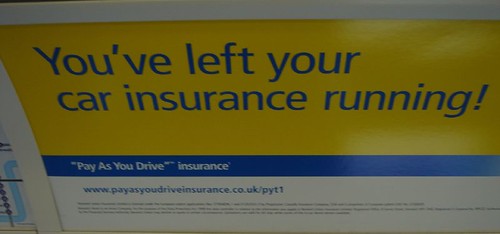Drive Green: How Pay-As-You-Drive Insurance Helps the Planet
When it comes to driving, going green usually means driving a fuel efficient car or – if you really want to save a few trees and don’t mind waiting for your car to charge – either buying one of those hybrid cars or a fully electric car. Pay-as-you-drive insurance is yet another way to drive green, but you get to use whatever vehicle you want. The idea behind PAYD is to pay for the auto insurance coverage you use based on how often you drive. Traditional car insurance is like an all-you-can-eat buffet. There’s no incentive to pass on that extra egg roll. PAYD insurance, on the other hand, gives you the added incentive of saving a little green just for staying off the road more. Egg roll optional.
How PAYD Works
The details differ slightly by insurance company, but the general idea is to offer a discount for putting fewer miles on the odometer. Progressive recently went national with its Snapshot Discount, the company’s version of a PAYD option. State Farm and Allstate offer similar discounts in some states. So far, 32 states allow PAYD discounts. Insurance regulations requiring discounts to be stated upfront are keeping other states from allowing PAYD as an option since the potential savings varies by driver. The basic requirements of PAYD include:
- Monitoring Your Driving – Most insurers offering PAYD require you to in-stall a GPS-like device on your vehicle for a certain period of time to deter-mine how much you drive and when you drive. Some states limit the infor-mation collected to mileage only.
- No Set Premium – Instead of a set premium, PAYD often results in pre-miums that fluctuate based on usage. Drivers who don’t clock that many miles tend to benefit the most.
- Mileage Allowance – Most insurers set allotted miles based on the data gathered through the device that captures your mileage. If you go over, you go back to your normal premium rate.
The Green Factor
Standard auto insurance offers no incentive to drive less, making PAYD an attractive option for green enthusiasts. According to a study commissioned by the Conservation Law Foundation, PAYD reduces accidents, fuel consumption, and vehicle miles traveled by 5-10 percent. A 2008 report from the Brookings Institution notes that PAYD discounts could also mean reduced carbon emissions, less dependence on oil, less demand for gasoline, and less local pollution. If universally applied, it’s estimated that PAYD would cut driving by about 8 percent, which would cut carbon emissions by about 2 percent. Progressive estimates potential savings at about $150 a year, while a report by the Brookings Institution’s Hamilton Project estimates possible savings at $270 per car per year.
Even if you cut back on how much you drive, you may not be eligible for the PAYD discount if you’re driving during high-risk hours or if you drive and park in unsafe neighborhoods. Then there’s the privacy trade-off of having your driving monitored to determine your eligibility for the program. Those less likely to add significant mileage, such as non-commuter students and seniors, are poised to save the most with this option. Those with a spotty driving record or a job that requires a lot of driving, however, aren’t likely to benefit from PAYD. It really depends on your driving habits, but PAYD is at least worth considering – especially if you want to feel good about being a little greener. George Clooney and Kermit the Frog would approve.
Norman Hale is a freelance blogger, who writes on behalf of www.carinsurance.org.uk, a website that can help you find a cheap car insurance quote.
 Alternative Energy HQ solar power for homes, wind energy, and bio fuel issues
Alternative Energy HQ solar power for homes, wind energy, and bio fuel issues








